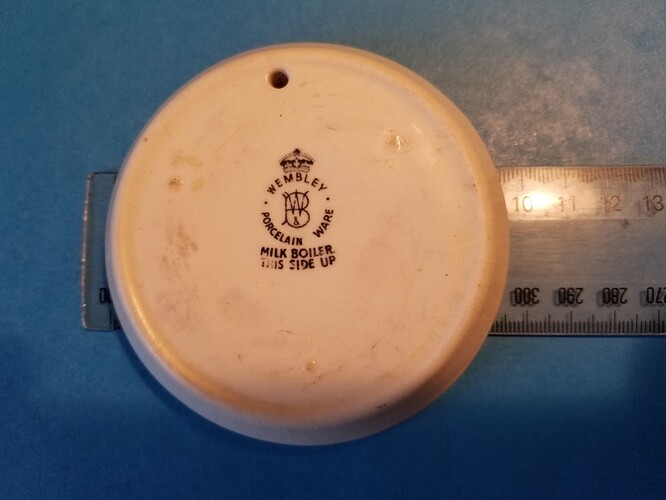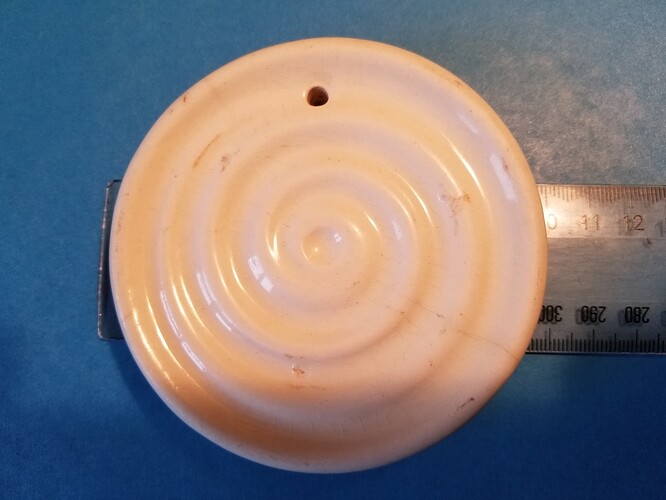I can’t seem to get milk to boil on my new induction hob without it burning on the base. Is there some special type of saucepan that’s better for boiling milk without burning it? Also can milk be boiled in the microwave?
Nice to see you again @porcheen!
To boil milk without scorching:
- Heat over slow heat stirring constantly while it comes to the boil.
Or: - Use a double boiler.
Hope that’s useful to you ![]()
Yes, but unless it is stirred regularly, it will form a thin skin.
Care should also be taken when using a microwave as it is possible to superheat liquids if the container is very smooth and has no defects. In such circumstances liquids can have temperatures higher than their boiling point, and and have eruptive boiling if the liquid is disturbed after heating.
Induction hobs are very efficient at heating the base of the saucepan. When heating any solid or liquid, only the quantity directly in contact with the base is heated. Hence the advice to stir while heating.
I can remember we once had a little ceramic disc with a down facing spiral and vent hole in it that was sometimes used in the bottom of the saucepan. Aluminium pot of course in the days of the modern 50/60’s kitchen because cast iron etc was so heavy and old fashioned.
We regularly boil milk on our induction. How you do it depends on how fast you want it.
If you want it fast, turn it up and stir like crazy once it starts to let off bubbles until it is boiling. If you aren’t in a rush, turn on to a medium heat and leave it until it starts to bubble and then stir with increasing regularity until boiled.
For more tips on how to boil milk, look here.
This is an Aluminium version of what Mark mentioned. It maintains circulation of the milk in the saucepan, so long as you don’t try to heat it too quickly
We had a glass/pyrex one without a hole. I went to look for it to take a photo, but it appears to have relocated itself to ‘missing sock haven’; from which occassionally spare socks and other objects mysteriously re-appear for a brief visit.
I have an induction cooktop and boil my milk for coffee every morning. I use a silicone spoon to continually stir the base and sides of the ceramic coated saucepan. I use the boosted heat setting to get the job done quickly. Milk may slightly stick but because of the constant stiring, it never burns. Been doing this way for well over a decade. Let the saucepan sit for an hour of so with some detergent and water, use a dish brush and presto its clean and ready for the next use.
I cover the bottom of the pot with a small amount of warm water first,then add milk .
Yes milk can be boiled in the microwave. Just pour into a microwave safe cup/mug/jug and heat until you can see the milk rising up the container.
Ordinary pans are not recommended for use on induction cooktops (some should not be used at all) so you may need to change your cookware to get a better result. Have a look at this from Choice! https://www.choice.com.au/home-and-living/kitchen/cookware/buying-guides/induction-cookware
I doubt that a different pan that heats on an induction stove will make any difference. If the pan is (or contains) ferromagnetic iron or steel it will heat and if it doesn’t it won’t. Of the ones that do heat you still need to do it right - none is carefree.
I’ve got a metal thing like that too that I use to stop pasta boiling over. I’ll try it in the milk next time thanks.
@porcheen: Induction cook tops require their own appropriate cooking vessels but, as it has been pointed out, that has nothing to do with scorching milk.
Milk’s major components are water, protein, fats. Heated protein sticks to the bottom of the pan and burns. That’s why milk needs to be stirred well and all of the time.
(A ‘milk watcher’ of whatever material, placed on the bottom of the pan helps to circulate the liquid.)
Milk needs to be watched at all times to avoid spills: as the water evaporates the pressure builds up and pushes the protein, fat, etc, layer out so that air can escape, that’s what causes those sudden and messy spills.
In simple terms: don’t have the heat too high, stir all the time, watch all the time ![]()
No, if a pot works on the induction stove it works, if it doesn’t it doesn’t. If it is burning you have the heat too high for the amount of stirring. A wooden spoon with a flatish blade may make it easier.
Yes you can. But if you want to keep it in the container and avoid cleaning the MW don’t. You cannot stir it and it risks becoming superheated and bumping. “Bumping” is a real term used by chemists and describes the explosive effect of heating liquids without sufficient nucleation. To fix this include a source of nuclei (which is not such a good idea with food generally) or stir more.
Milk has two properties that make it tricky to boil, lack of nucleation and foaming. To deal with both heat it slowly and stir frequently. The type of stove or the pot are not the problem. The problems are impatience and inattention.
This. My mum always insisted on low heat and constant stirring, an heating only to simmer, not boil. Oh yeah… and only use the wooden spoon.


